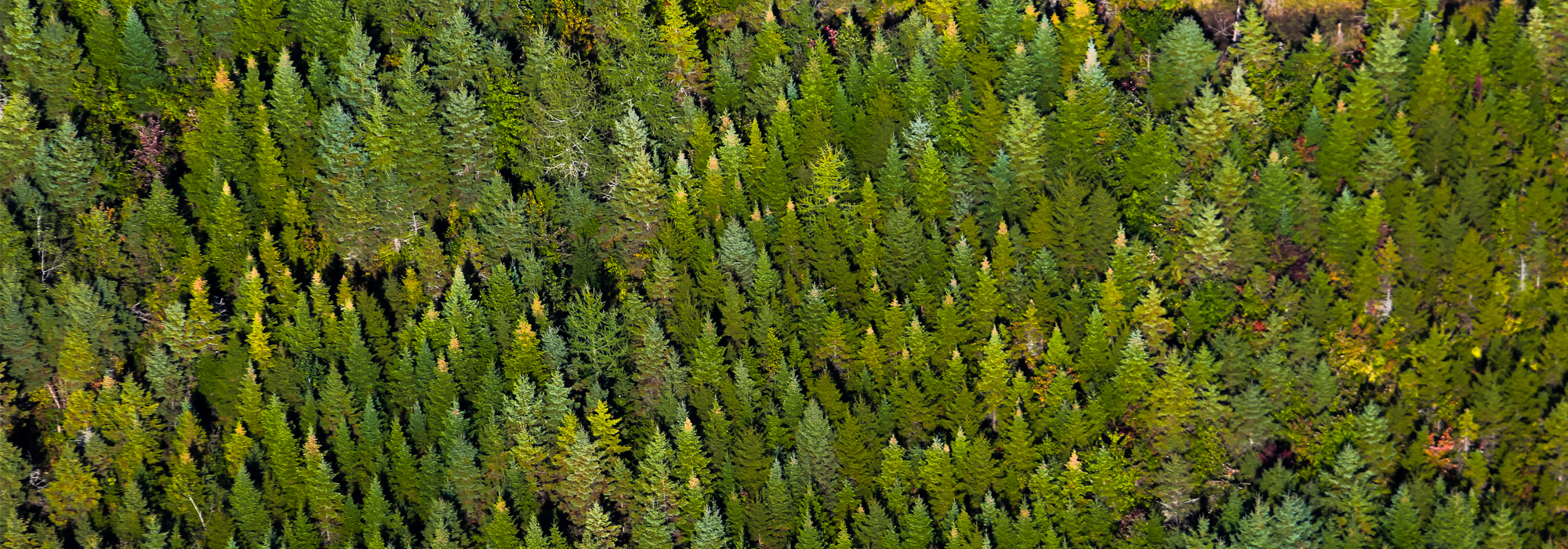
A “logging loophole” is jeopardizing Canada’s global climate commitments, allowing the logging industry to escape scrutiny and regulation for impact on the climate-critical boreal forest. The boreal forest is a global climate linchpin, storing twice as much carbon as the world’s oil reserves. Yet, every minute, the logging industry fells an area of boreal forest the size of seven NHL hockey rinks, with devastating carbon impacts. These emissions feed the climate crisis, just like those from the fossil fuel industry, but they remain unregulated and undercounted.
Our planet is warming and, if we do nothing, is on track to reach a global temperature rise of 4 to 5 degrees Celsius in this century. We can still avoid this catastrophic outcome, but only if we look not only to eliminate fossil fuels but also to protect the forest ecosystems that have regulated our climate for millions of years. Industrial logging, just like fossil fuel expansion, has a long-term climate impact.
Canada’s 270 million hectares of boreal forest is part of the most carbon-dense forest biome on the planet. When this forest is logged, it both releases stored carbon from its vegetation and soils and loses its capacity to absorb carbon. Like taking your foot off the brake and pressing down on the gas pedal, both of these accelerate climate change.
While Canada has put a price on the carbon the fossil fuel industry emits, through the Greenhouse Gas Pollution Pricing Act, it has not done so for the carbon impact of industrial logging. This means that the logging industry is able to externalize the social and economic costs of its climate footprint, and that there is no incentive for the logging industry to adopt climate-friendlier practices like protecting carbon-rich forests, avoiding road building across wetlands and implementing selective logging practices and longer harvest rotations.
Nor is Canada fully accounting for logging’s emissions, a gap that helps perpetuate the industry’s dangerous and misleading narrative that it is climate-friendly and that serves as a justification for irresponsible forestry policies.
We have been told by both industry and governments that for every tree that is cut down, another tree regrows. Under this assumption, eventually the forest will regain the carbon sequestration capacity it had before being clear-cut. And because the forest is not converted to another use, such as farmland or urban development, Canada does not classify this logging as “deforestation.” This portrayal of Canadian logging as sustainable has always belied the true extent of the industry’s impacts, given that it can take well over a century for these second-growth forests to achieve the biological diversity and carbon storage potential of the original forest. The process is further hampered by the fact that the logging industry favours replanting trees of the same species (or fewer species) and age.
New evidence starkly refutes the industry’s long-entrenched myth of near-perfect forest regrowth, showing that logging’s impacts are severe and sustained. A recent study from a Canadian NGO, Wildlands League, has shown that, across 27 clear-cuts in northern Ontario, an average of 14 percent of the impacted area remains essentially barren even two or three decades after being clear-cut. Additional photos released in July reveal a similar pattern across an even broader swath of the region.
These long-term scars are due to logging roads and “landings,” where logs and unwanted logging residue are stacked, compacting the earth and suppressing regrowth. Yet Canada’s carbon reporting, which assumes the forest is returning, fails to account for these logging scars. Assuming the current rate of deforestation continues, in Ontario alone forests’ climate mitigation potential will be reduced by half, or 41 million tonnes of CO2, by 2030. If this trend holds true elsewhere in the boreal, the climate impact will be even greater.
This new information raises significant questions about the assumptions informing Canada’s forestry policies and its reporting on logging’s climate impact. Without more rigorous empirical documentation of logging’s actual footprint, including enhanced scrutiny of forest recovery and the emissions from the forest’s carbon-rich soils, Canada risks downplaying the industry’s carbon impact and undermining its own international climate commitments.
Canada’s lack of attention to the real-world impacts of long-lived harvested wood products also fuels the logging industry’s precarious claims about its climate benefits. Canada has integrated long-lived forest products into several key climate strategies based on the premise that they can be a pathway toward emissions reductions. The problem with Canada’s undiscerning claims about the climate benefits of logging and harvested wood products is twofold. First, much of what Canada produces from its forests is not long-lived at all, ending up as throwaway tissue products, newsprint and other disposable materials that quickly lose their remaining stored carbon. Second, even long-lived products are a boon to the climate only under a very narrow range of circumstances. Unfortunately, these circumstances — including complete regeneration of the forest — don’t often play out in reality, meaning that policies that lean on harvested wood products as a climate solution may be misguided and dangerous without meaningful changes to logging practices.
That said, the Canadian government has made strong and unprecedented commitments to nature-based climate solutions and is committed to protecting 17 percent of its lands and inland waters by 2020, 25 percent by 2025 and 30 percent by 2030. The government has also committed to investing $3 billion over 10 years to plant 2 billion net additional trees across Canada. These actions signal the federal government’s understanding of the boreal forest’s key role in addressing the climate crisis. However, the logging loophole is undermining these efforts.
As part of these climate commitments, the federal government could go further by closing the logging loophole and maximizing the boreal forest’s capacity as a climate ally. To do this, the federal government should act on four priorities:
- More accurately account for the logging industry’s emissions by including permanent deforestation from road building and landings and investing in more on-the-ground surveys of logging’s climate impact.
- Regulate the logging industry’s emissions by applying the federal carbon price to forestry emissions and by giving incentives to forestry companies to avoid logging in high-carbon forests and to adopt climate-friendlier forest management.
- Make the protection of intact, carbon-rich forests a central element of its commitment to protect 30 percent of lands and inland waters by 2030.
- Prioritize Indigenous-led land management, since strong Indigenous land rights are not only critical to Indigenous self-determination but are also correlated with better protections for forest carbon and healthier forest ecosystems, including higher biodiversity.
There are only a few years remaining to avoid catastrophic climate change, and the boreal forest is one of the world’s best natural climate allies. Unfortunately, the atmosphere does not recognize creative accounting or differentiate between logging’s carbon emissions and fossil fuel’s impacts. It’s time for Canada to close the logging loophole, step into the climate leadership role it claims and fully prioritize the preservation of this global climate linchpin.
Photo: The boreal forest in Quebec. Shutterstock.com, by Pat Lauzon.













